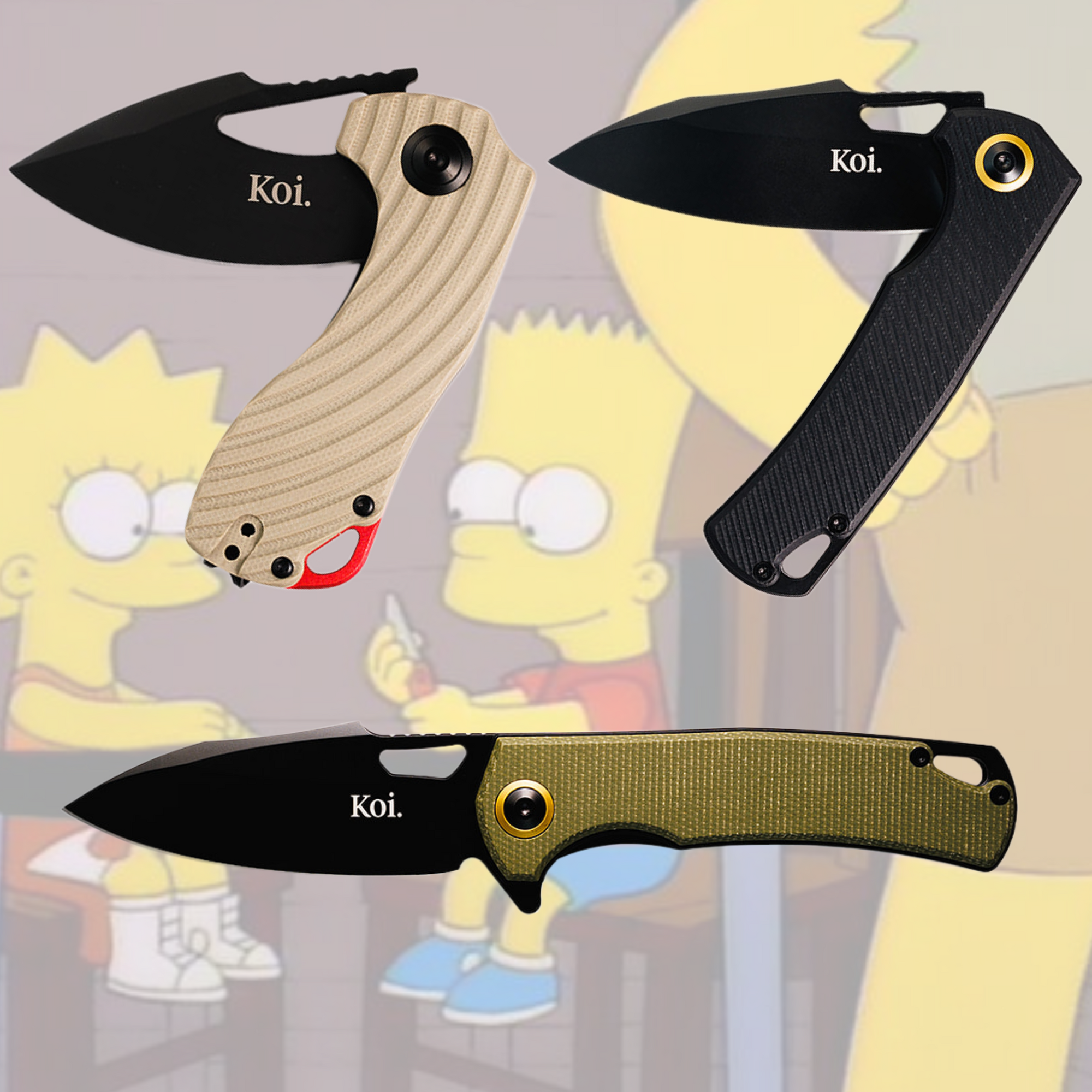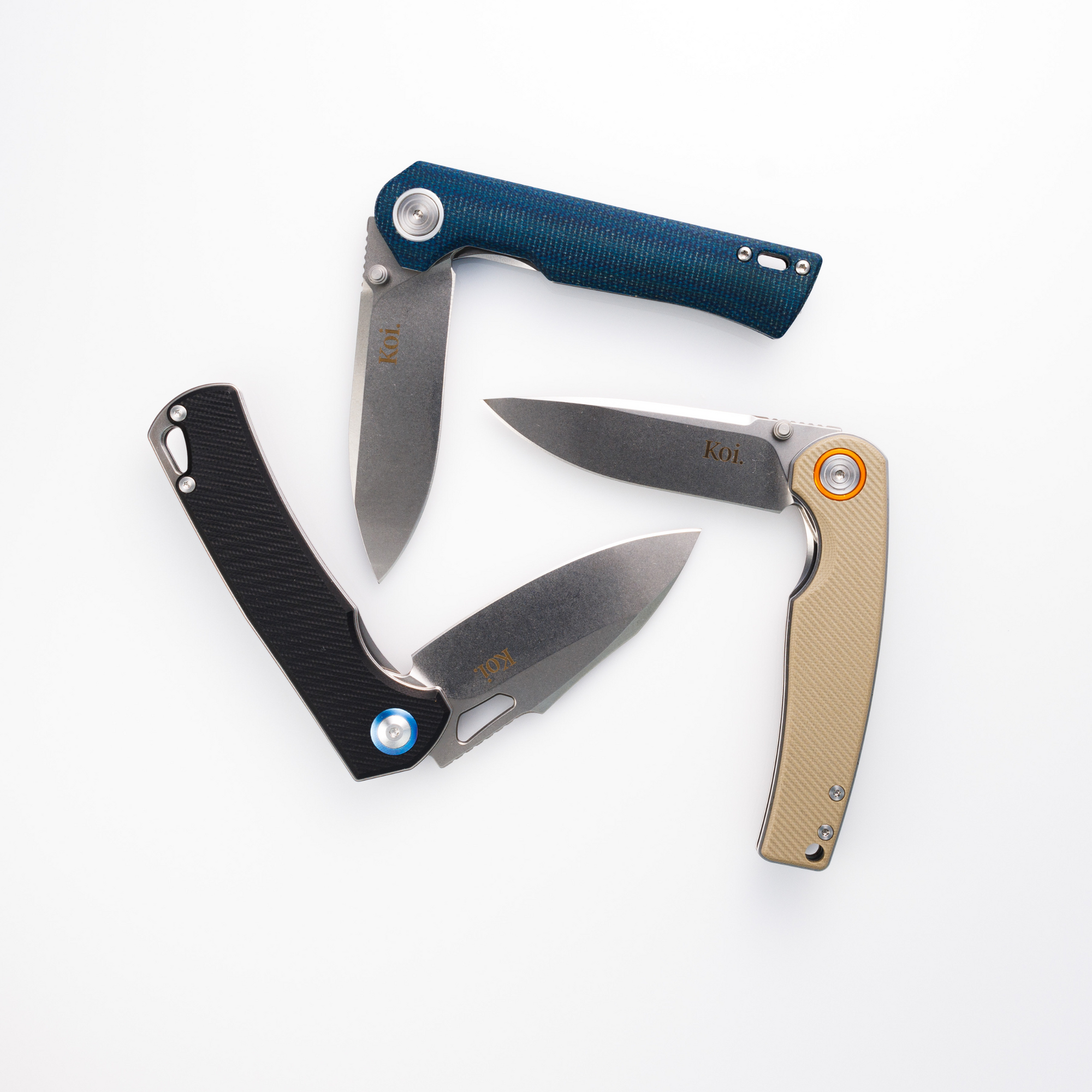Knives might look all similar. However, if you will assess adequately, you’ll notice that they’re unique from each other. One of the best sets of knives in the market today are Japanese Knives. Known for their durability and sharpness, they are sought after the world over.
Now, I understand if you’re not familiar with these knives or probably thinking of switching to this type. It's expected for first-time buyers of Japanese knives to get overwhelmed with its wide range of steels, shapes, and handles. Worry no more, I got your back. Let me tell you where to start.
Types of Steels Used in Japanese knives
You might be asking which type of steel you should pick for your first-ever Japanese Knife. Well, the best answer for that is to have an in-depth look at how these steels function according to their purpose. Let’s look at different kinds of steel used in forging Japanese knives.
Carbon Steel
Carbon steels are known for their sharpness, durability, and strength. Many even mentioned that it was their favorite type because of its excellent edge retention and ease of sharpening. Like any other steel, carbon steel knives need proper care due to being prone to rust and discoloration. Nonetheless, carbon steel knives are a good choice for beginners willing to invest in superb cutting performance.
Stainless Steel
Stainless steels are valuable for their noteworthy longer edge retention and easy maintenance. Moreover, if you compare stainless steel with carbon steel, you’ll find that stainless steel is much more resistant to corrosion. Stainless steel knives are best suitable for those looking for a knife to use in cutting wet and acidic foods. Just by ensuring that you’ll take good care of them, stainless steel will serve you for a long time.
Stainless Clad Steel
Stainless clad knives possess the qualities of both carbon and stainless steel. They’re not susceptible to discoloration and unpleasant smells, which turns out to be the main problem with carbon steel knives. They also have high cutting performance and are very easy to maintain. Though it might look advanced, I still highly recommend this type of steel for beginners as it would serve them in the long run.
Types of Japanese Knives
Apparently, steel type should not be the only factor you’ll consider in choosing the best Japanese knife for you. You should also pick the best shape to help you with your kitchen errands. Each Japanese knife differs in its performance and usage. Let’s take a further look at how each type of Japanese knife performs according to its purpose.
Gyutou
If you’re looking for a versatile knife, then Gyutou is the right one for you. Consider this as the all-rounder of Japanese knives. You can use it not just in working with vegetables and meat, but also in other general activities. Gyutou is the equivalent of a European Chef’s knife, but it’s lighter and made from more rigid steel. Gyutou’s long blade, sharp tip, and curved rim make your chopping easier since you can maneuver it smoothly.
Kiritsuke
If you need a knife that is longer than Gyutou but with a more angled tip, you might want to consider buying a Kiritsuke Knife. Its flatter profile is perfect for slicing fish and chopping with up and down or the push or pull method. Its angled tip is called “K-tip” or “reverse tanto tip,” making chopping easier with your guide finger.
Santoku
The most popular Japanese Knife, Santoku, is very similar to Gyutou but with a taller blade structure. Santoku means “three virtues” in Japanese, reflecting its ability to cut fish, meat, and vegetables. Known as a multi-purpose knife, Santoku will indeed become your go-to Japanese knife.
Bunka
Wider than Santoku, the Bunka knife is like a Kiritsuke Knife with an angled tip. Same with Santoku, you can use it in general kitchen activities. However, it’s more efficient in cutting meat and fish since Bunka has a triangle-shaped end.
Nakiri
Nakiri has a commendable reputation for cutting vegetables. Though it may look like a cleaver or a butcher knife because of its square-shaped appearance, you should still never use it to slice boney ingredients. Its tall blade and flat profile make cutting more manageable. Apart from that, you can also use the knife’s edge to transfer the vegetables to a container quickly.
Petty
If you prefer a versatile knife good for minor ingredients, let me introduce you to the Petty knife. This small knife is excellent for regular knife tasks and, surprisingly, for butchering. Technically, this knife is a delicate tool that you can even use to debone fish and meat.
Why Should We Choose Japanese Knives?
If you do your research, you’ll find out that the Japanese are well-known for providing the highest and best quality products globally. That includes the sharp and versatile Japanese knives that they’re proud of.
The quality of these knives is noteworthy with their production and consistency. It’s not surprising, however, that Japanese artisans inherited the skills from their ancestors, who produced the best quality swords for the Samurais. You’ll surely understand how sharp Japanese swords are if you love watching action films.
Aside from the traditional style of forging the blades of Japanese knives, you should also check on the consistency through their modern technology. Today's more prominent companies can create a more significant number of Japanese knives with proper quality assurance.
Of course, you should also check on the aesthetics. Japanese manufacturers are dedicated to their historical reputation, making Japanese knives more beautiful and unique than others. Japanese knives are the pride and joy of their artisans, making each knife speak for their rich culture.
Overall, Japanese knives are reliable and helpful in preparing your meals. It might undoubtedly be confusing which one to buy first since each knife has its specialty. The best thing you can do is check which Japanese knife suits you based on your regular kitchen habits, personality, and taste. After all, whichever Japanese knife you buy first will surely be worth a dime.



